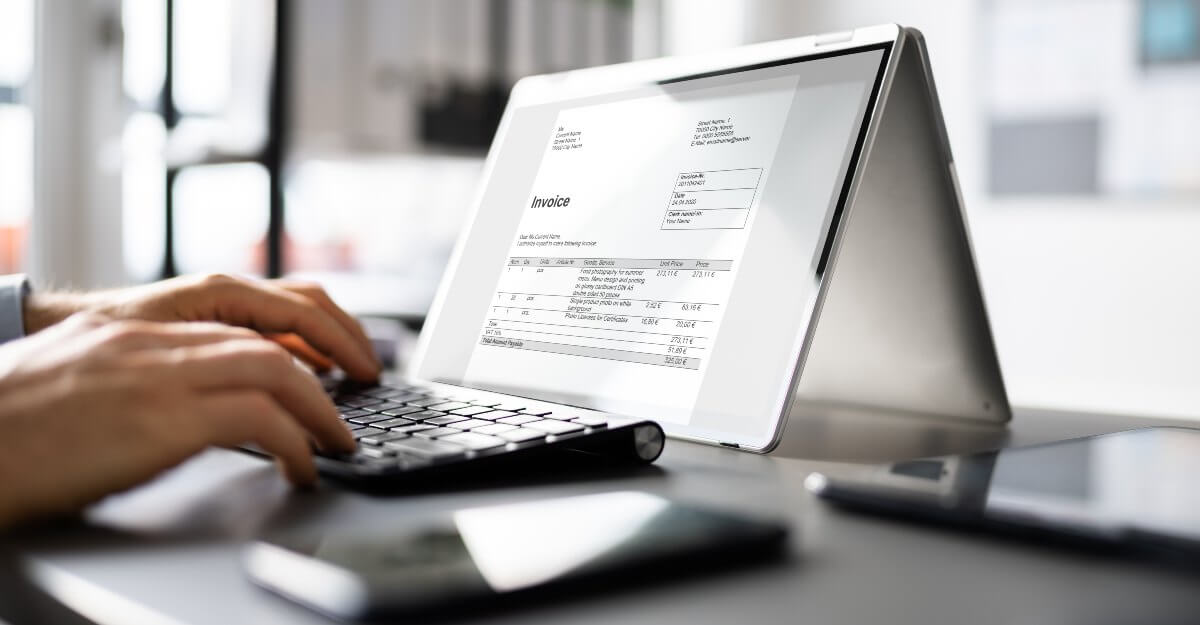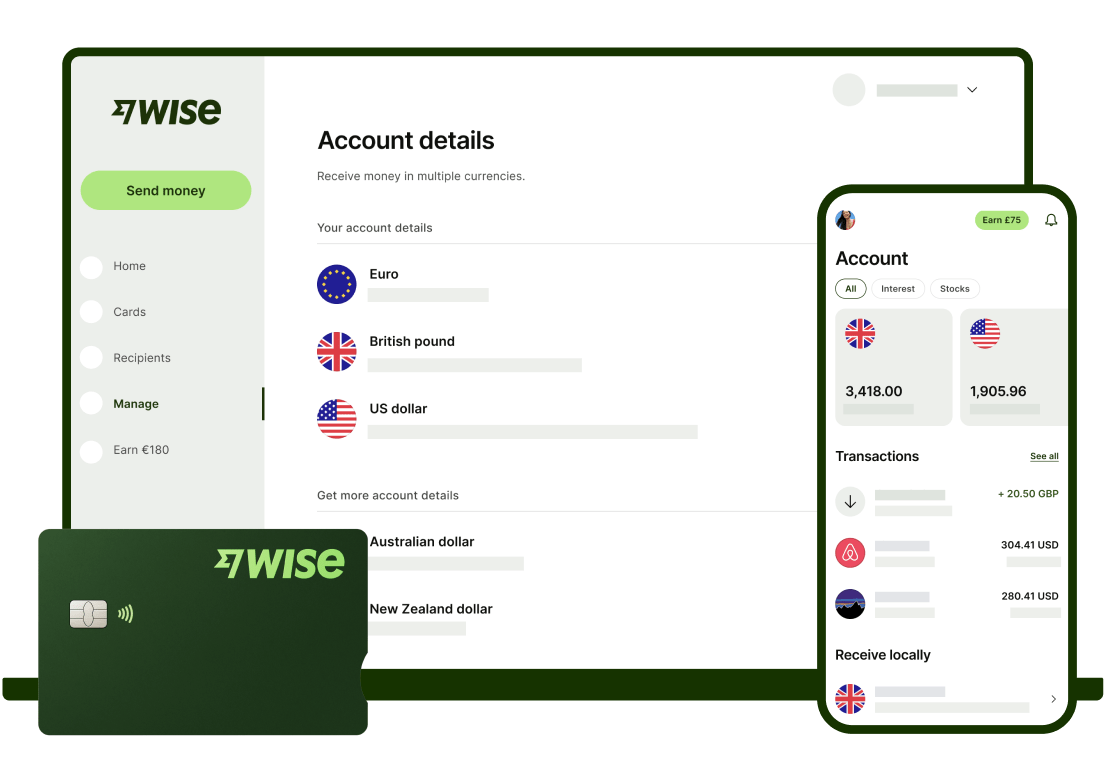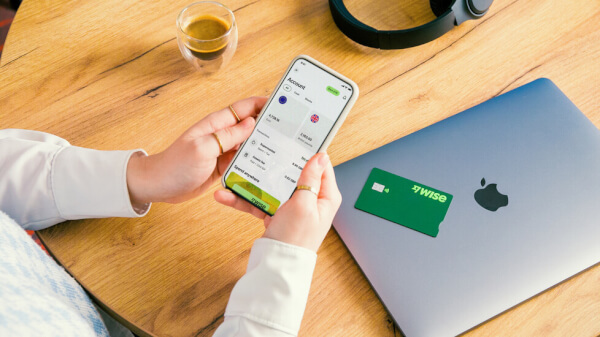5 Ways to Stand Out and Boost Black Friday Sales
Black Friday is the day after Thanksgiving, falling on Friday 29th November in 2024. It’s known for being a perfect time for snagging a bargain, opening the...

You may have heard of digital invoices and electronic invoices as a smart solution to cut down on admin time. In some cases - particularly when invoicing government authorities - e-invoicing may even be mandatory. But what is e-invoicing, and how does it work?
This guide walks through all you need to know about electronic invoices, including how they vary from some other forms of digital invoicing, and which e-invoicing solutions you can choose from. Plus, as a bonus we’ll touch on Wise Business as a smart way for UK companies to get paid by international customers, no matter how you choose to invoice.
💡 Learn more about Wise Business
Let’s kick off with some of the most important questions about e-invoicing and why you might like to (or need to) use it.
By using an electronic invoice system, companies can save an enormous amount of admin time and money. Plus, they can improve the accuracy of their accounts, by removing much of the risk of human error.
Other benefits of e-invoicing include:
- Increased ability to analyse spending and contract performance
- Faster payment cycles
- Enhanced tracking
- Ease in dispute mitigation
- Opportunity to find more supplier discounts and rebates
- Better auditability overall
- Ease of access to data
- Environmentally friendly - through reduction of paper use.
An e-invoice is a type of digital invoice - but not all digital invoices are e-invoices. An electronic invoice follows an agreed set of rules to transmit data about a bill to be paid - it’s not necessarily intended to be read by a human, or set out as a traditional paper invoice would be.
For example, e-invoices structured in the EDI format (electronic data exchange) can only be read by a computer, so the recipient will also need software to process the invoice on receipt and make the payment.
The broader category of digital invoices may include PDF versions of a traditionally laid out invoice, or even scans of paper invoices that have been issued in hard copy.
The requirements and regulations about electronic invoices for UK business can vary depending on your company turnover and the type of entity you’re invoicing. It’s not currently mandatory to issue e-invoices in the UK, aside from when you’re invoicing central, regional and local authorities.
However, the HMRC Making Tax Digital project which launched in 2019 effectively means that VAT registered businesses need to submit and maintain digital records, which has meant that more and more UK businesses have moved over to e-invoicing1.
The EU e-invoicing directive was implemented in April 2020, and now, 27 EU member states and 4 non-member EEA states follow these guidelines on the standardisation of e-invoicing processes to reduce friction2.
Generally, all EU and EEA countries require e-invoices to be used when submitting invoices to central and regional authorities, although the exact processes involved do vary a little from one country to another. There are handy factsheets on the EU website which cover the latest information by country, showing where e-invoicing is mandatory and where it is not3.
| Read more about invoicing European customers from the UK on our complete guide. |
|---|
Need to receive payments from overseas customers? Check out Wise Business which lets you get paid in 9 currencies, including euros, pounds and US dollars, with local bank details. More on that later.
Get started with Wise Business 🚀
Different types of e-invoices can be issued and accepted in the UK. These include ‘structured’ e-invoice formats, which aren’t designed to be read by humans and which need to be read by a computer - and ‘unstructured’ or hybrid formats, which can be read by humans and processed fully electronically by a computer as well.
According to the EU fact sheet on the e-invoice formats which are accepted in the UK, you can choose any of the following formats, which are all also compliant with EU standards;
- EDI standards such as UN/EDIFACT, EANCOM and ODETTE
- XML-based standards
- comma-delimited ASCII, PDF
- UBL and UN/CEFACT
There are lots of different e-invoicing solutions - which works best for you will depend a lot on the size of your business, the type and location of your customers, and so on. Broadly your options include:
- Cloud accounting software, such as QuickBooks, Sage, Xero or FreshBooks
- Payment processors such as Square, SumUp or Zettle
- Dedicated e-invoicing apps and software such as Zoho, InvoiceBerry or KashFlow
Bear in mind that you’ll need to check that the solution you pick is compatible with HMRC if you need to hold and submit digital tax records, and that it allows you to create invoices electronically which can be accepted in all the countries you trade in.
No matter where you’re selling to from the UK, Wise Business could help you get paid seamlessly in a broad selection of currencies.

Open a Wise Business account online or in the Wise app, for a low one time fee, and get access to local bank account information to get paid in 9 different currencies, including pounds, euros, US dollars and more. There’s also the handy Wise request payment feature to make getting paid from overseas a breeze.
Wise currency exchange uses the mid-market rate with no markup or margin added, and low, transparent charges for the services you use. There are no ongoing costs and no minimum balance to maintain - plus you can get cloud accounting integrations, batch payment solutions, expense and debit cards and fully customisable and manageable user permissions, so your team can access the tools and information they need to do their jobs.
Get started with Wise Business 🚀
E-invoicing can be faster, cheaper and easier than issuing invoices in hard copy. Use this guide to get started - and don’t forget to also check out Wise Business to see if you could save on currency conversion costs when selling abroad.
Sources used in the article:
Sources last checked March 01, 2024
*Please see terms of use and product availability for your region or visit Wise fees and pricing for the most up to date pricing and fee information.
This publication is provided for general information purposes and does not constitute legal, tax or other professional advice from Wise Payments Limited or its subsidiaries and its affiliates, and it is not intended as a substitute for obtaining advice from a financial advisor or any other professional.
We make no representations, warranties or guarantees, whether expressed or implied, that the content in the publication is accurate, complete or up to date.

Black Friday is the day after Thanksgiving, falling on Friday 29th November in 2024. It’s known for being a perfect time for snagging a bargain, opening the...

December kicks off the end of year shopping period, with huge uplifts in on and offline sales as people grab a bargain and get ready for the holiday season....

The term "turnover" is used often in the world of business, but its implications vary significantly depending on the context. At its core, turnover is a...

Wise is a financial technology company focused on global money transfers that offers two different types of accounts: a personal account and a business...

In today's fast-evolving digital landscape, e-commerce is quickly transforming the ways consumers shop and how businesses operate worldwide. DHL’s E-Commerce...

In an increasingly interconnected global economy, small businesses in the United Kingdom (UK) have more opportunities than ever to expand through import and...